Wet systems are characterized by a pipe network constantly maintained with pressurized water. Water is held back by a closed/un-activated sprinkler.
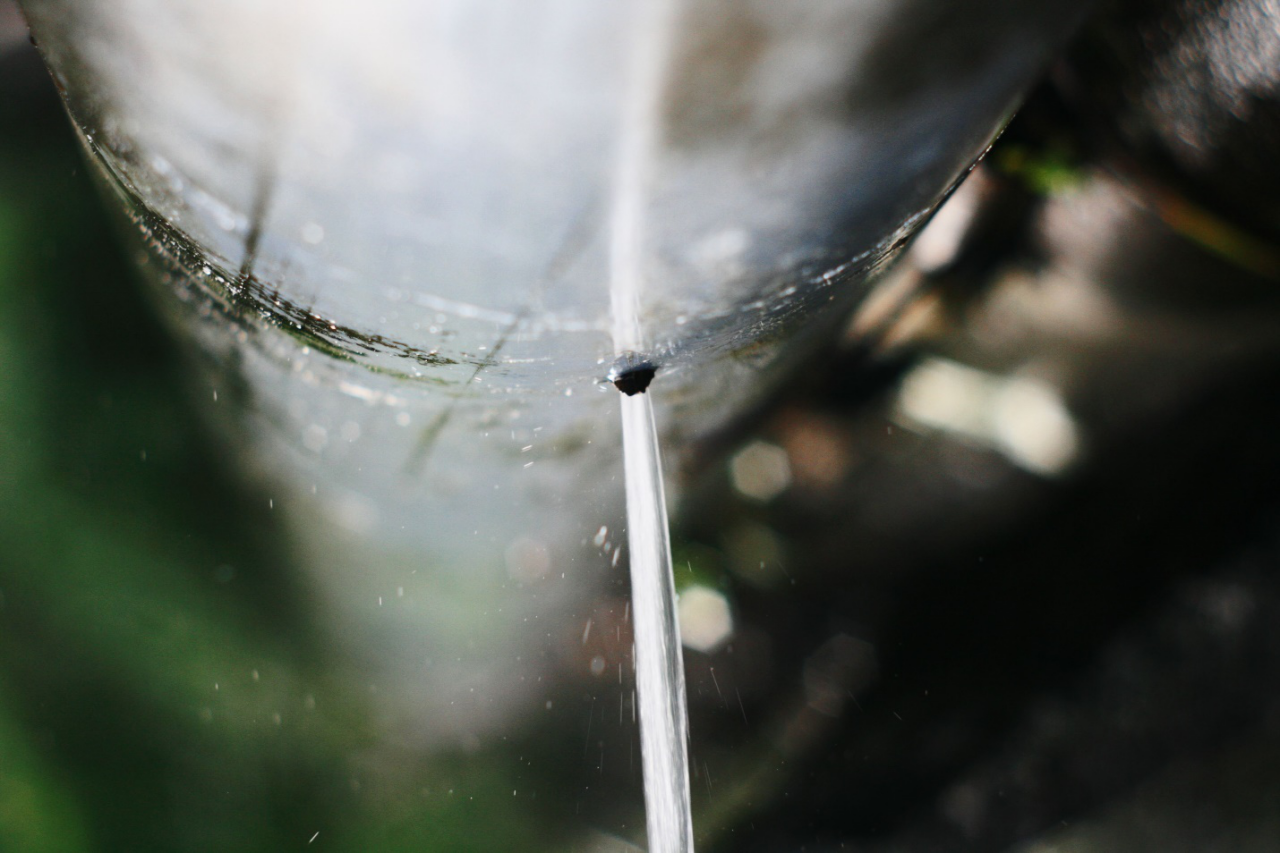
A fire sprinkler system is an active type of fire protection system that discharges water in the event of a fire. While some types of fire sprinkler systems are designed to control the fire event until the fire department arrives and others are designed to suppress the fire, all sprinkler systems are designed to minimize the risk and impact of a fire. Protecting life, property, and business continuity are the ultimate goals of a fire sprinkler system. Under the International Code Council’s model codes, fire sprinkler systems are required for most commercial and industrial buildings and some residential structures.
The expanded adoption of the International Building Code family over the last several decades has resulted in the installation of millions of fire sprinkler systems. While the applicable building code will specify if a structure is required to have a fire suppression system, NFPA 13: Standard for the Installation of Sprinkler Systems determines the type of fire sprinkler system to be installed. NFPA specifies several types of fire sprinkler systems depending on the use of the facility — either wet, dry, preaction, deluge, or special hazard systems. Selection of a fire sprinkler system type is based on many factors such as the hazard being protected, the operation characteristics of the facility and business operations.
All water-based fire sprinkler systems carry a risk of leaks. Often the risk of leaks associated with a fire sprinkler system will play a role in what type of sprinkler system is installed in a facility. For example, a facility with hydrophobic contents (like a museum, library, or a medical research facility) will likely install a preaction system to minimize the risk associated with having water-filled pipes above sensitive content, processes or equipment. Facilities that have a lower risk profile such as warehouses and office buildings will likely install a wet pipe system.
Again, due to the materials of construction used in fire sprinkler systems, all systems will corrode and develop leaks if no corrosion control program is put in place. Fire sprinkler system maintenance and installation can be a large expense, and as such should be viewed as an asset worth protecting.
It is important to understand the type of system your facility has so that the corrosion risk associated with that type of system can be addressed. Equally important is understanding the business continuity impact that a fire sprinkler corrosion leak can have on your business in the form of property damage, lost operation and maintenance expense. If your system is new or is not currently experiencing leaks, a proactive preventative corrosion management plan will decrease your risk and significantly extend the service life of the system. If your system is already experiencing leaks, implementation of a corrosion management strategy can prevent full system replacement.
The resources on this page will provide you with the basic understanding of several “systemic” practices in the fire protection industry that make corrosion problems unavoidable. Additionally, understanding the mechanics of oxygen corrosion and the role that oxygen plays in developing system leaks will provide perspective on how a corrosion control program can provide tangible benefit to the bottom line of any business.
Read our white paper on industry myths regarding corrosion for more on this subject.

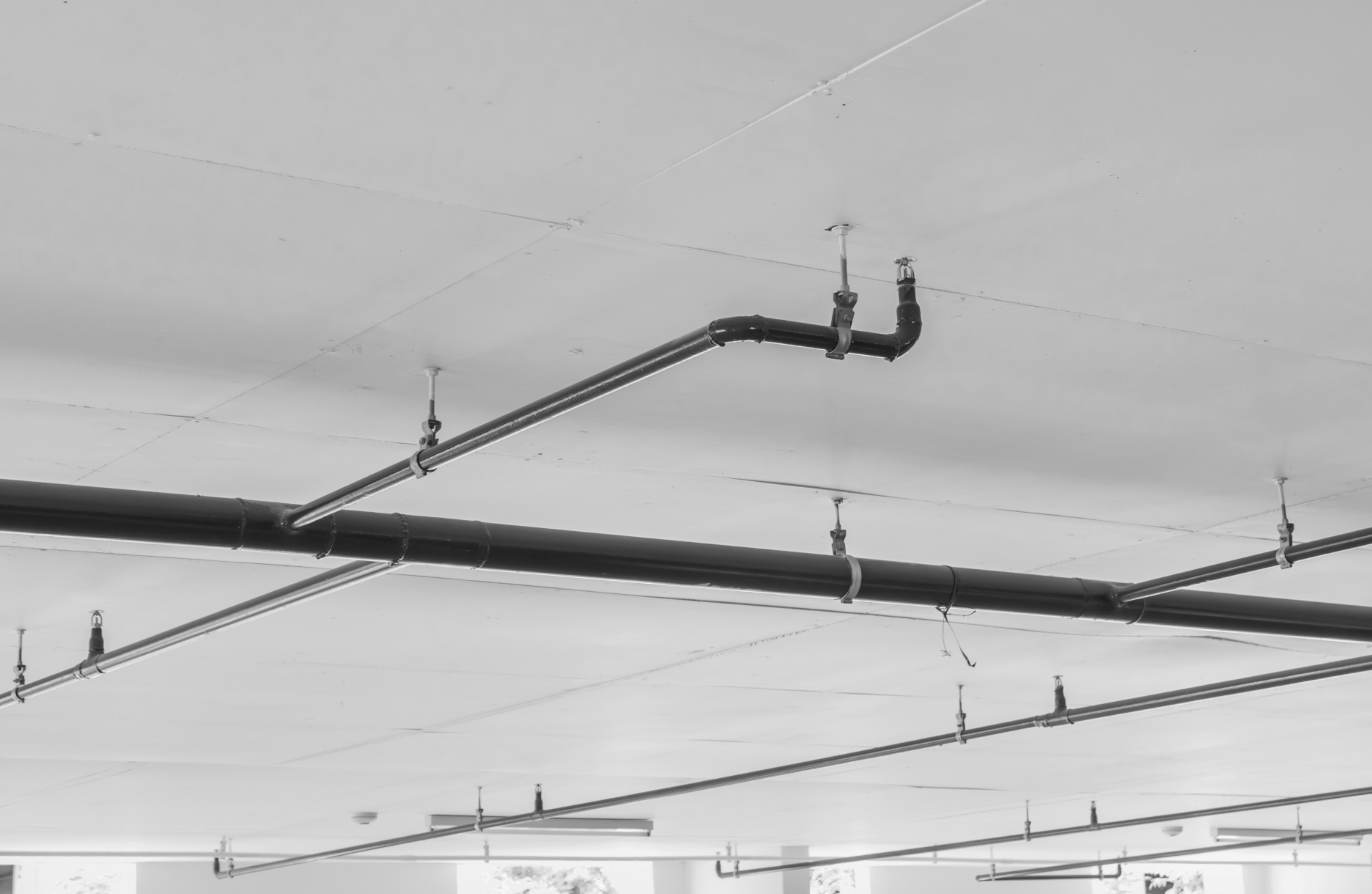
Despite the Hollywood portrayal of sprinklers discharging all at once, most fire sprinkler systems are designed so that sprinklers operate individually. This allows the fire sprinkler system to discharge only the amount of water necessary to control or suppress a fire. An excessive amount of water coming from a sprinkler system can actually cause significant water damage and unnecessarily stress the water supply.
Fire sprinkler systems are the single most effective method for fighting the spread of fires in their early stages, before they cause property damage or bodily injury. Sprinklers can activate in as little as 1 minute — much faster than average fire department response times. In buildings completely protected by fire sprinkler systems, over 96% of fires are controlled by fire sprinklers alone.
All fire sprinkler systems consist of a water supply, a network of supply piping, and fire sprinklers. Most systems receive their water supply from a municipal source, but they might also be supplied by water storage tanks or natural sources such as lakes and ponds.
Most fire sprinkler piping networks consist of metal pipe, but in some less hazardous applications — such as single- or multi-family homes — the network may also include plastic materials. Sprinklers, designed to discharge water once the air temperature reaches a specific point, are installed at regular intervals throughout the piping network.
Let’s take a closer look at the specific components of a fire sprinkler system.
All water-based fire sprinkler systems can be divided into two categories: wet systems and dry systems.
Wet systems are characterized by a pipe network constantly maintained with pressurized water. Water is held back by a closed/un-activated sprinkler.
Dry systems are categorized by a pressurized pipe network void of water. When pressurized gas is released from the system piping (i.e. in a fire event), the differential-pressure valve opens and fills the piping with water.
Wet systems are by far the most common type of fire sprinkler system, representing an estimated 85% of all installed systems. These systems are commonly installed in office, retail, warehouse, and commercial spaces.
In addition to the water supply, piping, and sprinklers, these systems have other required components:
A backflow prevention device must be installed between the water source and the fire sprinkler system. A backflow preventer provides two main functions.
Control valves can be found in multiple locations on a fire sprinkler system. All control valves are required to be an ‘indicating’ type, meaning that they must provide a visual indication as to the opened or closed status of the valve.
Common types of indicating valves include:
A main drain allows for the removal of water from the system and is a means of providing a forward flow test of the water supply. The main drain must be sized according to the size of the riser.
An auxiliary drain must be provided in any situation where the pipe network changes directions and traps water in excess of five gallons.
With few exceptions every fire sprinkler system is required to have a fire department connection. Commonly referred to as the FDC, the fire department connection allows responding fire personnel to pump additional water into the fire sprinkler system, both supplementing the existing water supply to the sprinklers and/or supporting firefighters entering the building.
Each sprinkler system zone must be equipped with a waterflow detection device that will signal when there is a waterflow event. In a wet system, waterflow is detected and signaled by an alarm check valve used in conjunction with a water motor gong, or by a paddle style flow switch that is monitored by the fire alarm system.
The fire protection industry now requires a means of venting trapped air from a wet system pipe network as it is filled with water. The 2016 edition of NFPA 13: Standard for the Installation of Sprinkler Systems added Section 7.1.5 which requires a single air vent to be installed on each wet pipe system using metallic pipe.
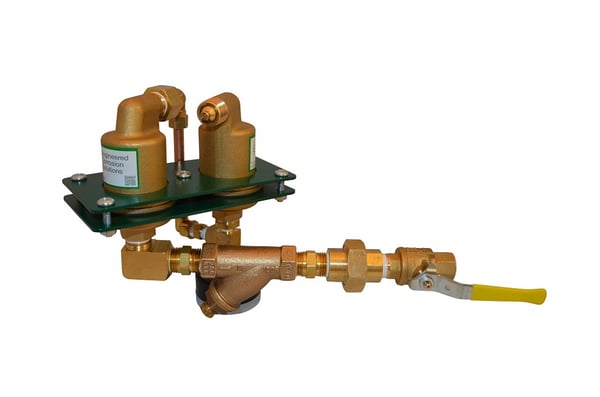
By ejecting trapped air from the pipe network as it is filled with water, the air vent accomplishes two important functions.
Despite all the updates to sprinkler system technology and industry regulations, the fact remains: all fire sprinkler systems eventually corrode to a point of no return.
Many building owners overlook this unfortunate truth until leaks begin to develop in their facilities. What’s more, most building owners are rarely proactive in maintaining a corroding fire sprinkler system until damaging leaks have begun to develop.
Fire sprinkler systems require routine inspection, testing, and maintenance. The frequency of some of these inspection, testing, and maintenance items range from monthly, quarterly, semiannually, annually, or even as seldom as every several years. Requirements differ from dry and preaction to wet and deluge sprinkler systems but generally include inspecting and testing valves, piping, gauges, fittings, and other components of the sprinkler system.
A unique requirement for dry and preaction systems is that they are required to have a full system trip every three years to ensure water can effectively flow throughout the system, and a full internal obstruction investigation every five years. A unique requirement for wet and deluge systems is that they need to be drained and internally inspected every five years for corrosion and blockages. Details about these inspection, testing, and maintenance requirements can be found in the edition of NFPA 25 Handbook your state or local municipality is using.
The purpose of performing routine maintenance is simple - to ensure that the fire sprinkler system will perform as designed if the event of a fire. Per a 2017 report by NFPA, it was found that only 96% of systems were effective, meaning 1 out of every 25 systems did not put out a fire when they were activated. Of the system failures, 81% failed because they were unable to deliver water to the fire. This failure can be caused by closed valves, corrosion, or blockages within the sprinkler system. Performing routine inspecting, testing, and maintenance is essential to preventing these sprinkler system failures.
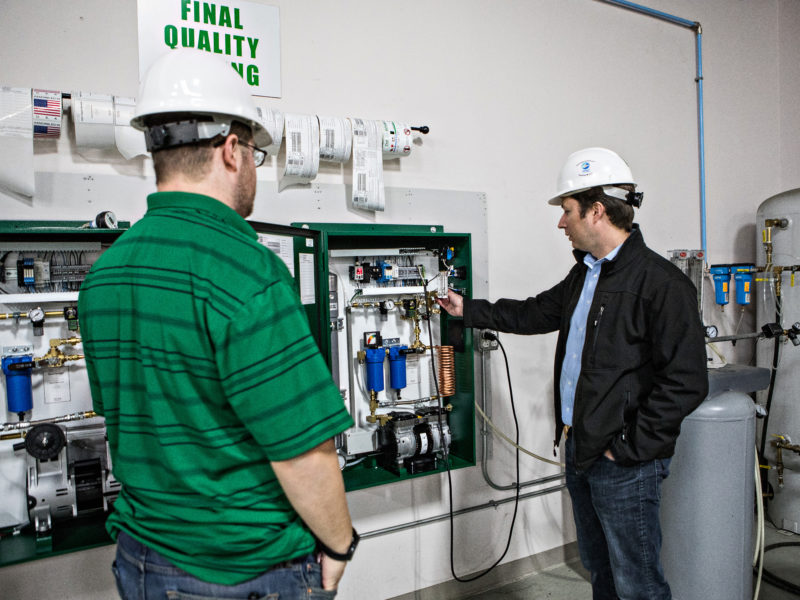
While these inspection, testing, and maintenance items are a necessary component of having a fire sprinkler system, we need to mindful of the impact this has on system corrosion over time. With dry and preaction systems, every time the system experiences a full system trip fresh water is being introduced to the system. After the trip is completed and the system is drained, pools of trapped water will remain in the system providing an opportunity for oxygen to dissolve into the water and corrode and form rust within the steel pipe.
In comparison, with wet and deluge systems every time the system is drained to for an internal investigation oxygen gets reintroduced to the system via the main drain. This oxygen becomes trapped in the system after the inspection and dissolves into the system’s water and corrodes the steel pipe where the trapped air collects, most often at the high points of the wet system. Without taking precautions, overtime these activities will damage the sprinkler system and eventually cause leaks and other issues that we are attempting to prevent with these inspections in the first place.
ECS offers several solutions that allow you to perform routine maintenance and testing while preventing future damage to your sprinkler system. With dry and preaction systems, a nitrogen generator will eliminate oxygen from your system replacing it with inert nitrogen gas, thus preventing future corrosion in the system. With wet and deluge systems, ECS offers automatic air vents that allow trapped oxygen to escape from the system before it can corrode the steel pipe. Using any of ECS’ corrosion mitigation products allows for proper system testing and maintenance without the adverse effects of re-introducing oxygen and/or water to the fire protection system.
Unfortunately, traditional leak repair is an example of a positive feedback loop, in which one variable in the system contributes to the exacerbation of another variable. This leads to net instability in the system.
In the case of fire sprinkler systems, each leak repair contributes to additional corrosion activity in the system. After enough corrosion damage has occurred in the pipe network, new oxygen introduced from a single leak repair can be enough to cause the next leak. Theoretically, this would cause a never-ending cycle of leak and subsequent leak repair. When we review the history of fire sprinkler systems we work on, we very commonly find an increase in leak frequency over time.

Even so, once the first several leaks show up in their sprinkler systems, most building owners opt for simple, cheap repairs. But once the leaks have become too common or too expensive, the owner typically defers to the expertise of their fire sprinkler contractor for a solution — and, more often than not, the contractor recommends a complete system replacement.
However, a complete system replacement does not take into consideration the highly localized nature of corrosion, and usually leads to a very expensive project to replace the pipe — much of which may still be in excellent condition.
So, when it comes to repairing vs. replacing the fire sprinkler system, surgical pipe replacement is the clear solution. Here’s a more detailed look at how system repair costs are calculated:
There are many significant variables to keep in mind when considering sprinkler system repairs:
The average dollar amount for sprinkler pipe replacement ranges between $6 - $8 dollars per square foot across the industry.
US tariffs on imported steel have created a spike in demand, causing domestic prices to increase in order to keep up. Many building owners and end users feel this pinch when their fire sprinkler system develops corrosive leaks and pipe failure.
You can expect lower labor costs for an easily accessible parking garage installation, but what about casinos, hotels, warehouses, national park centers, or high-risk data centers? Any type of facility that is ornate in design, with hard-to-reach areas or high ceilings that require lift equipment, entail much higher repair costs.
In facilities that operate 24-hours a day, that are occupied by patrons or guests, or that house hydrophobic equipment or processes, disrupting the primary business operation not only causes an inconvenience — it can also result in lost business opportunities and ultimately lost revenue.
When it takes hours for the contractor to reach the facility, additional time and cost is inevitably added to the service call. It’s not uncommon to pay for approximately 4-6 labor hours just to cover the drive time.
Because the traditional cycle of leak repair can be extremely costly to building owners, we always recommend the most cost-effective solution: surgical replacement of the most damaged piping followed by the implementation of a custom corrosion control strategy.
Because the nature of corrosion differs between wet pipe systems and dry/preaction systems, let’s review the contributing factors to corrosion in each type of system:
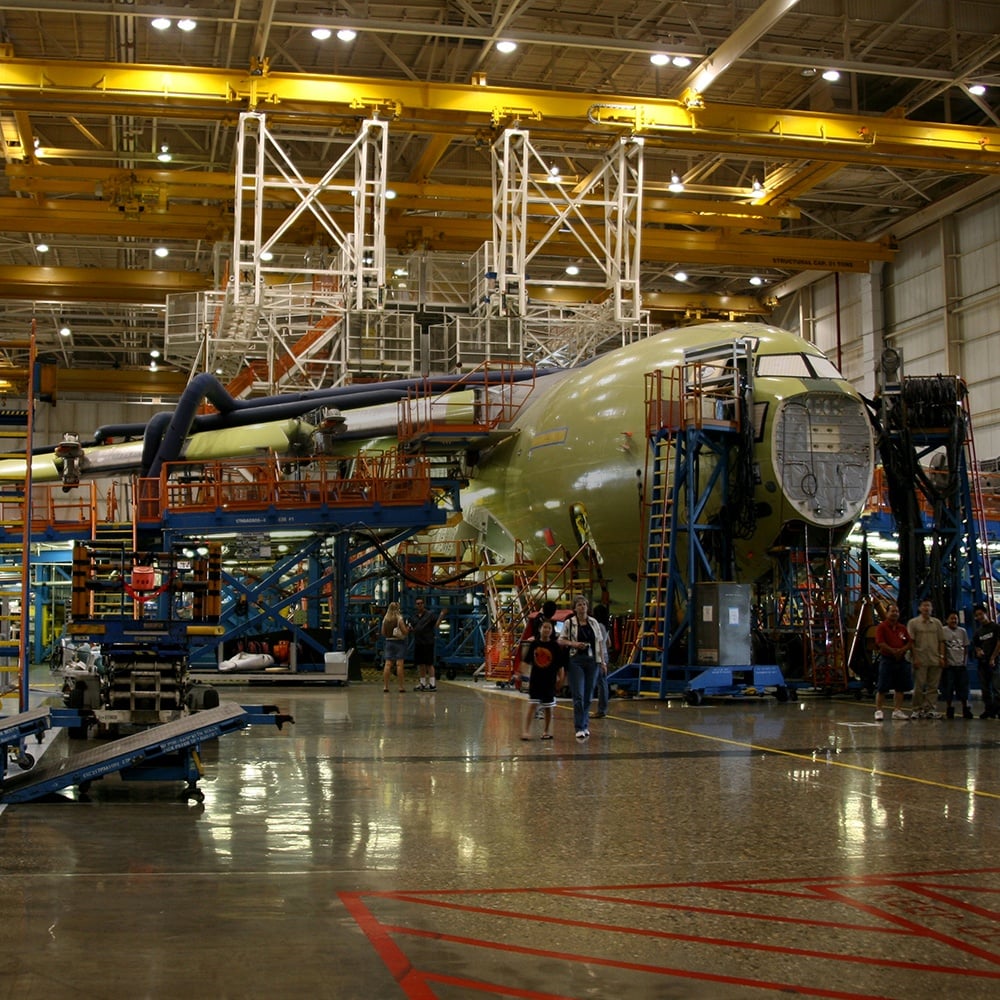
Keeping these characteristics in mind, we can determine the locations of the most severe corrosion by identifying where leaks have previously occurred. After locating the most damaged piping, we can make recommendations regarding which sections need to be replaced.
We offer two investigative methods to gather this data.
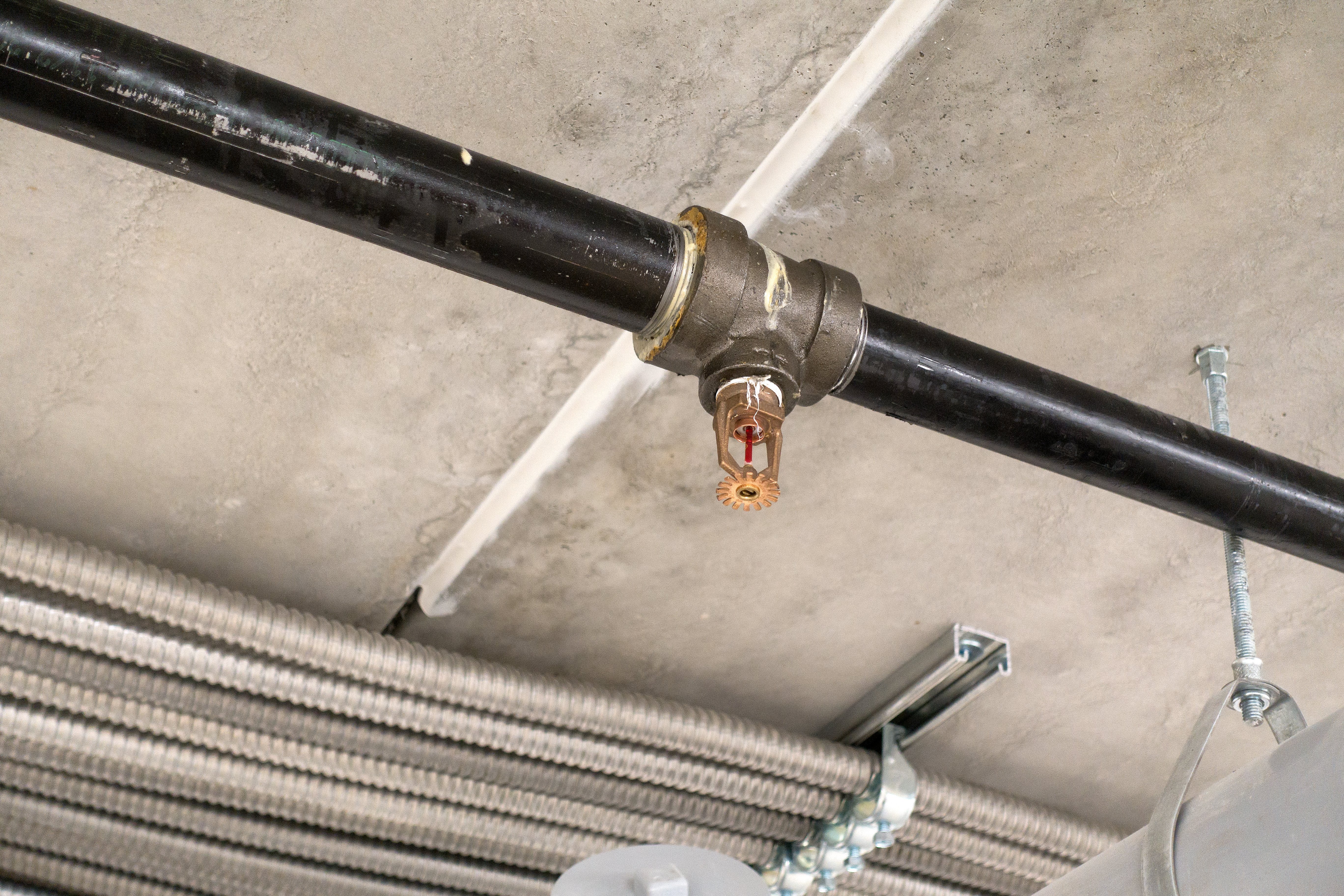
In a Corrosion Assessment, an ECS Engineer partners with a local fire sprinkler contractor to perform an on-site internal investigation to determine the location and severity of corrosion throughout the system piping.
The Corrosion Assessment includes:
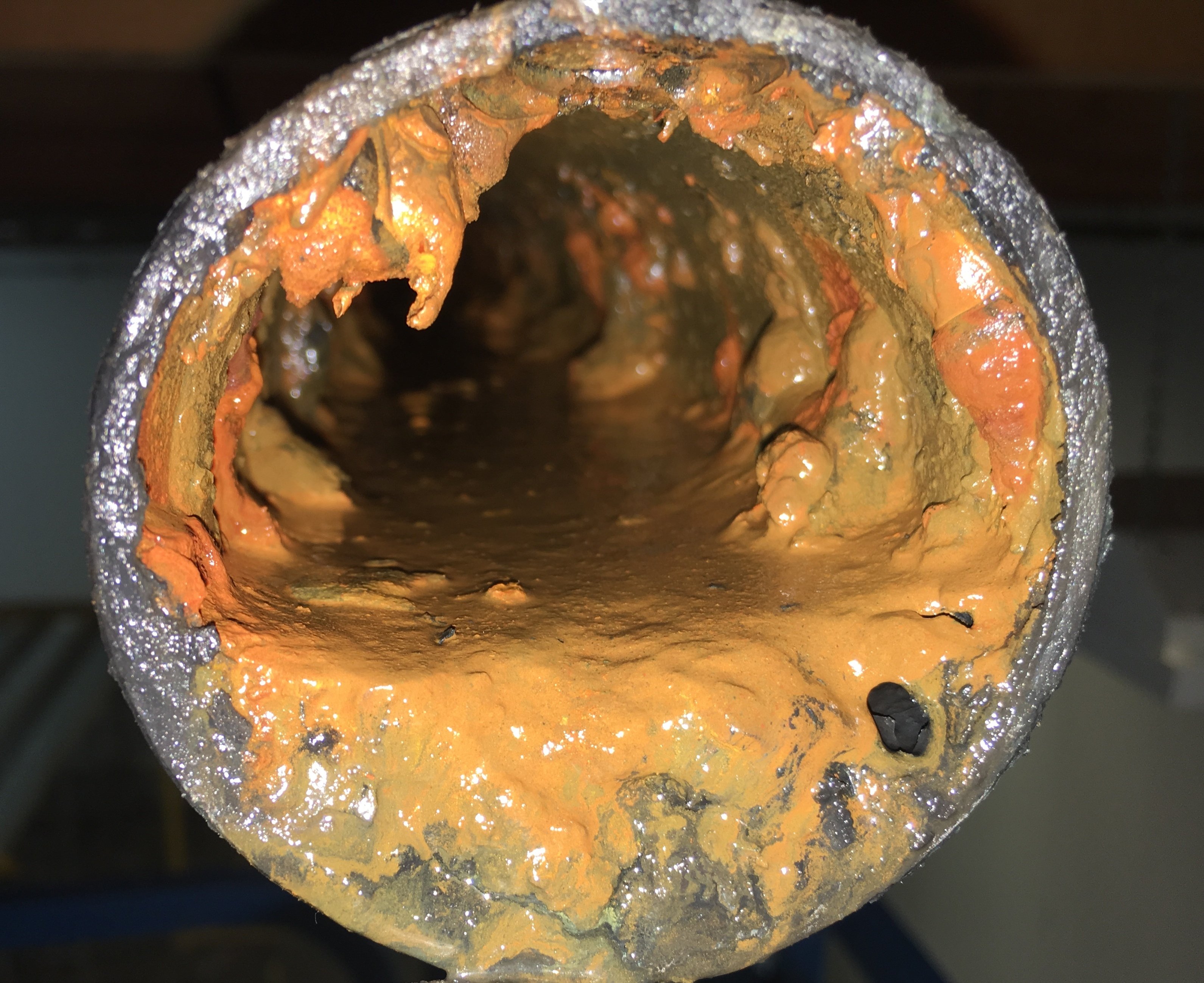
A pipe sample analysis provides quantified data on the amount of metal loss that has occurred in a certain section of piping. Instead of performing
When evaluating where to take the sample from in the sprinkler system, consider high points on wet systems where
After receiving the sample, our team can compare pipe wall loss to current industry standards and decide whether pipe replacement is necessary.
All fire sprinkler systems corrode, though the severity of corrosion and the need for a corrosion maintenance protocol depends on a large variety of factors. Consider your unique system layout, the frequency of maintenance, system materials (i.e. black steel or galvanized pipe), as well as pipe schedule. What you need to do and how soon heavily depends on your facility’s tolerance for leaks. Will down time for repairs impact your business? Will a leak affect business continuity? Will obstructions and a failure to operate in the event of a fire cause greater life safety risks? Can you afford not to consider corrosion management for your facility?
For some systems a simple vent installation can greatly reduce corrosion and extend the service life of the system. For mission critical or cold storage applications, you may need a nitrogen inerting protocol to arrest corrosion and protect the system. Being proactive can greatly reduce risk.
Call us at (314) 432-1377 or use the form below to schedule a time to talk to an ECS engineer about your system’s specific needs.
© 2025 Engineered Corrosion Solutions, All rights reserved. Intellectual Property | Privacy Policy